Making your own hamburger buns is a game-changer! These are soft with just the right amount of crumb (very important), a sturdy exterior and the classic seeds on top. They freeze well and reheat wonderfully. If you're apprehensive about working with yeast, I share all my tips to guide you.
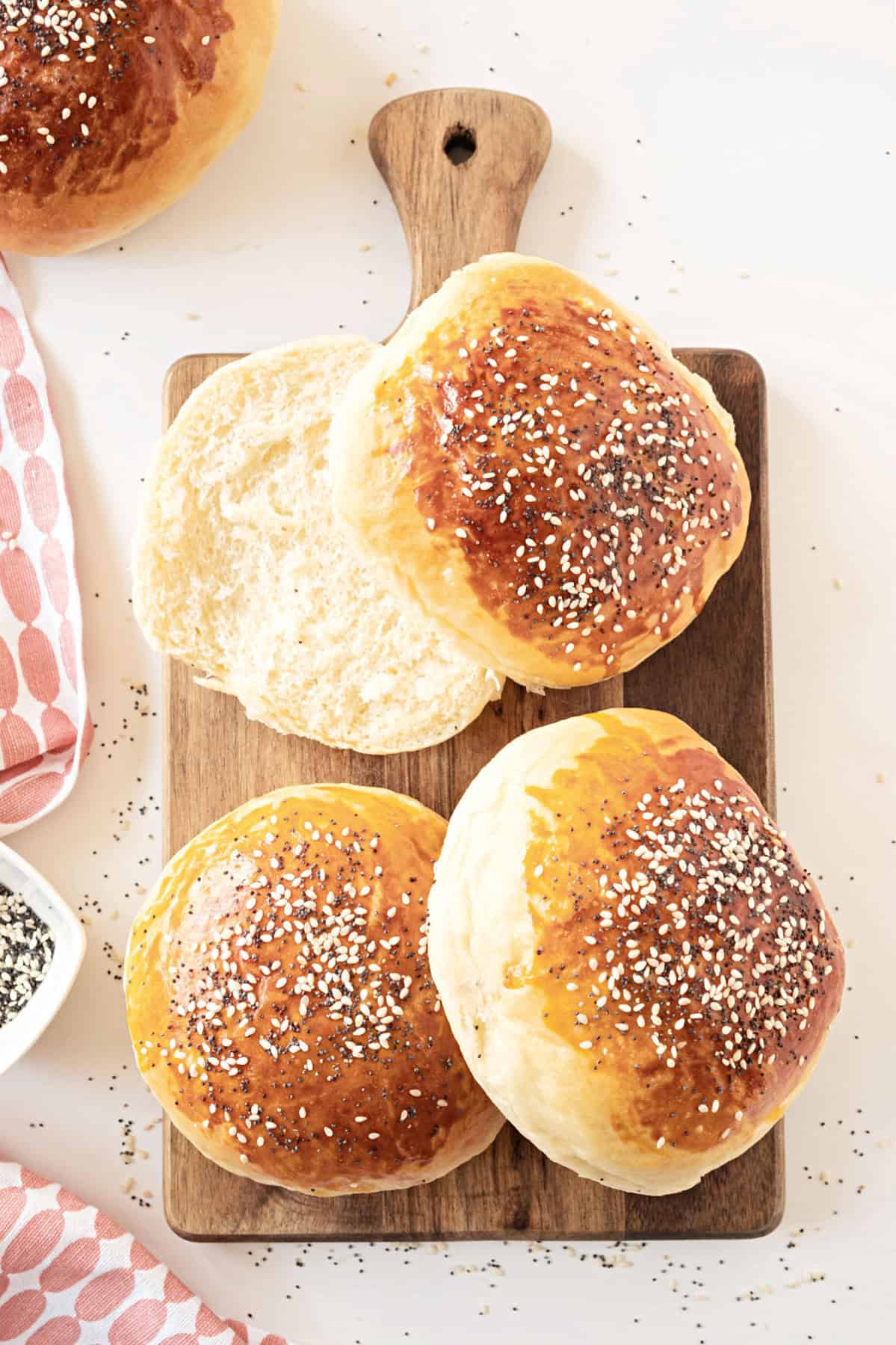
Make and freeze
With just a handful of pantry staples and about 3 hours, mostly hands-off time, you'll have soft and golden burger buns, and you'll wonder why you ever settled for anything else.
There's something deeply satisfying about pulling warm hamburger buns from your own oven. The aroma alone will have your family gathering in the kitchen.
Make a batch and freeze them. You can warm them up when the need arises. Also, you can bake small slider buns and hot dog buns with this dough.
They go well with meat burgers, of course, but also with veggie burgers, pulled pork sandwiches, sloppy joes or my favorite chicken sandwich. Make them into small buns and use them for these cheesy ham sliders.
Testing Notes
- Organization: Read the recipe first and ensure you have ingredients at the correct temperature, utensils and equipment needed, enough workspace and plan for the rising times. Yeast is active and waits for no one.
- Make sure the yeast is fresh and active: if it doesn't foam, you have to buy a new one. Using instant yeast might be trickier, as it's meant to be added directly to the flour and not foamed first. So, check the expiration date and buy a new one if in doubt.
- The milk temperature is crucial: too hot (over 120°F) kills the yeast, too cool (under 100°F) won't activate it properly. Test with an instant-read thermometer, the wrist test, or dip your pinky finger: it should feel barely warm, like a comfortable bath.
- Create a warm, draft-free environment for rising. I like to wrap it in a thick towel if the room is cold, or even a wool shawl. An oven with just the light on, or a bowl of hot water placed near the dough, also works. First rise should double in size (60-90 minutes), second rise until puffy (45-60 minutes).
- The amount of crumb is important. Burger buns don't need a lot of crumb. We want the filling to shine and the bread to accompany it, not be the main character. So, you want flatter rounds of dough that expand to the sides more than up like dinner rolls.
- All-purpose or bread flour? Both work, but bread flour has more gluten and creates a chewier and sturdier dough. It can be easily purchased online. King Arthur's unbleached bread flour is a popular one. If unavailable, use all-purpose flour.
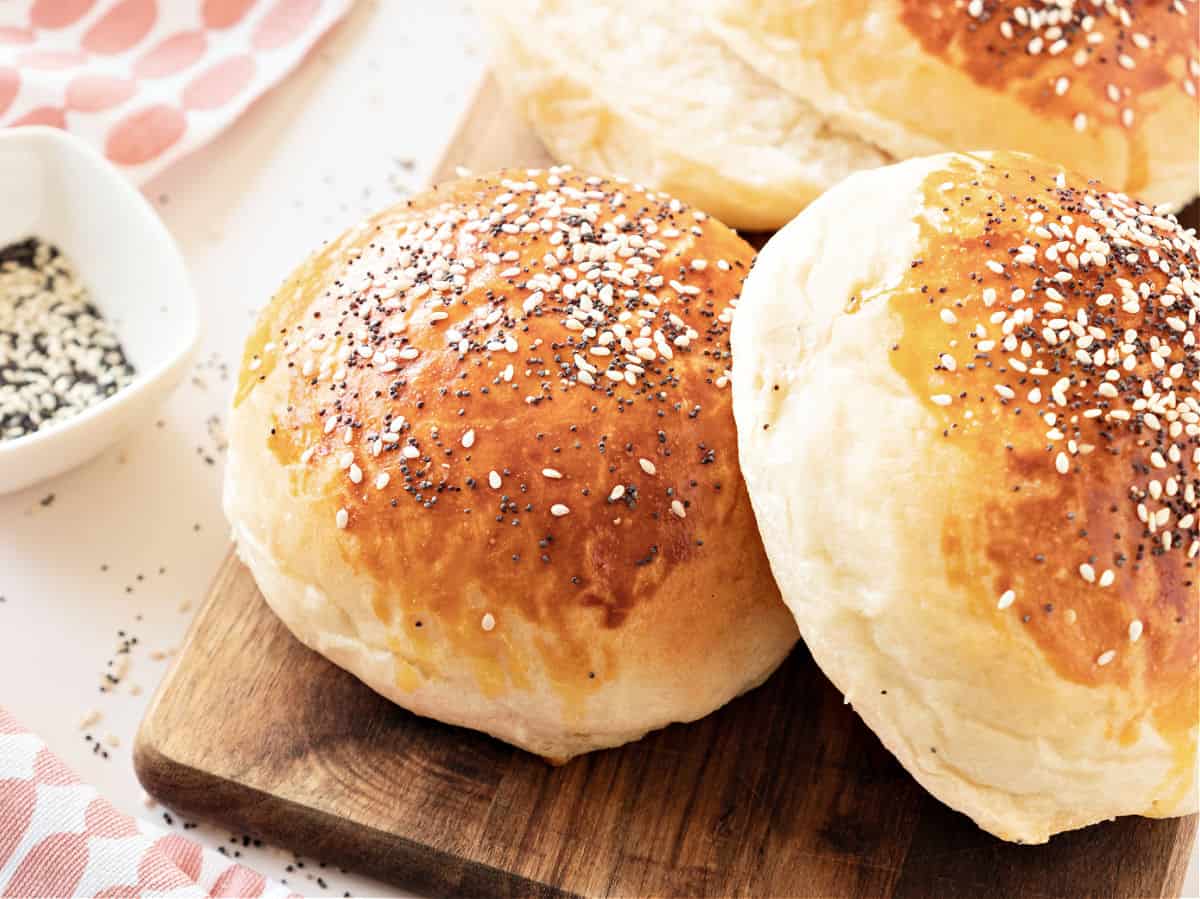
FAQ
Often caused by not kneading enough, underproofing (not enough rise), or using too much flour. The dough should be soft and elastic, and slightly tacky.
1-2 days at room temperature, tightly wrapped or in an airtight container. Freeze extras for up to a month.
Yes, but you'll lose that beautiful golden color and slight shine. Milk or melted butter also work as alternatives, though the finish won't be quite as attractive.
Uses and variations
- It can be formed into different shapes such as rolls, loaves, baguettes, batards (football-shaped), breadsticks or even pizza.
- Add-ins: change the flavor by using chopped herbs (basil, thyme and oregano are great), onions, or grated cheese to the dough, and have savory dinner rolls.
- Toppings: besides sesame and/or poppy seeds, you can use bagel seasoning, grated cheese, or just leave them plain.
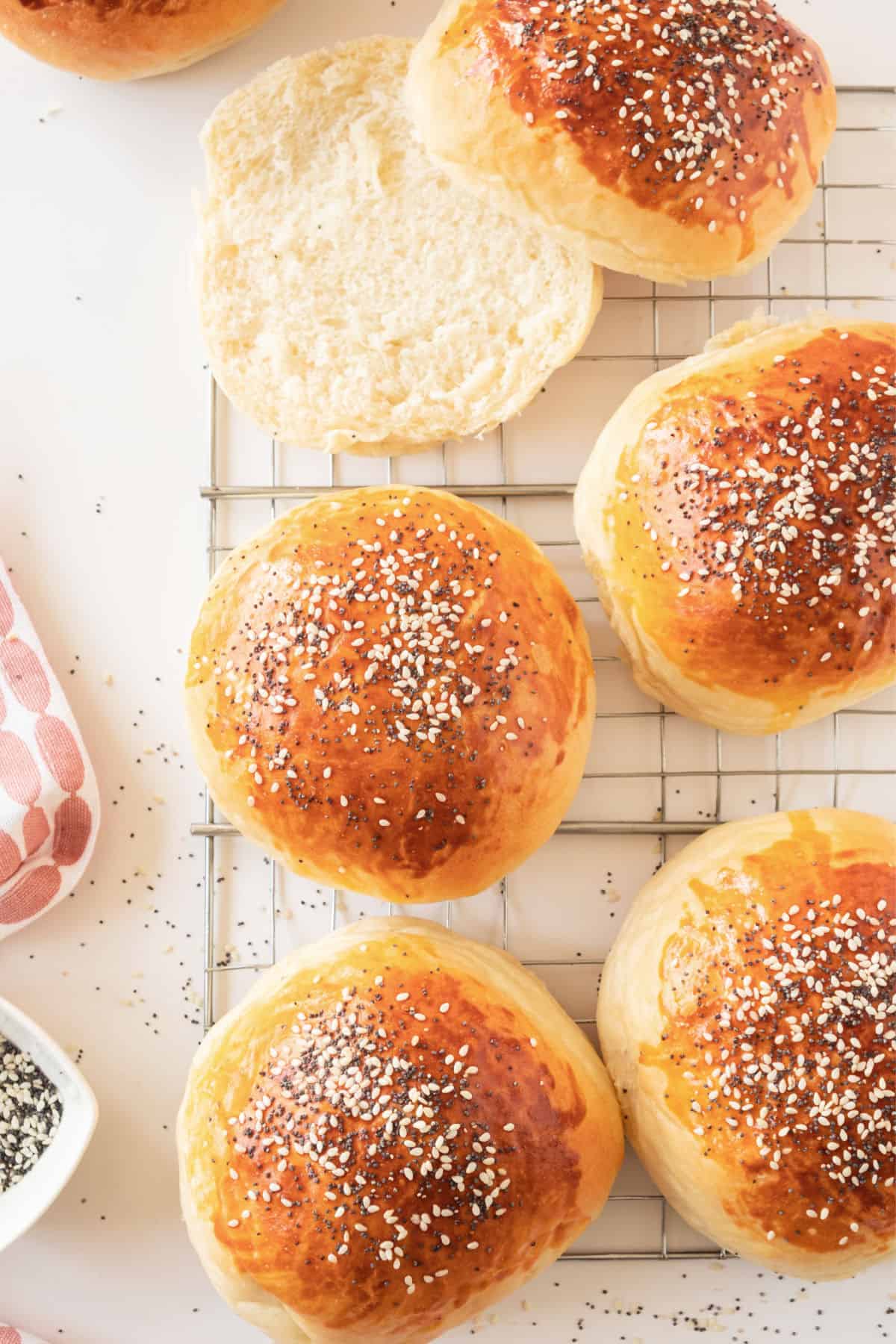
Process steps
Stand mixer: If using it (it's highly recommended, but you can knead the dough by hand), mix the ingredients directly in the mixer's bowl.
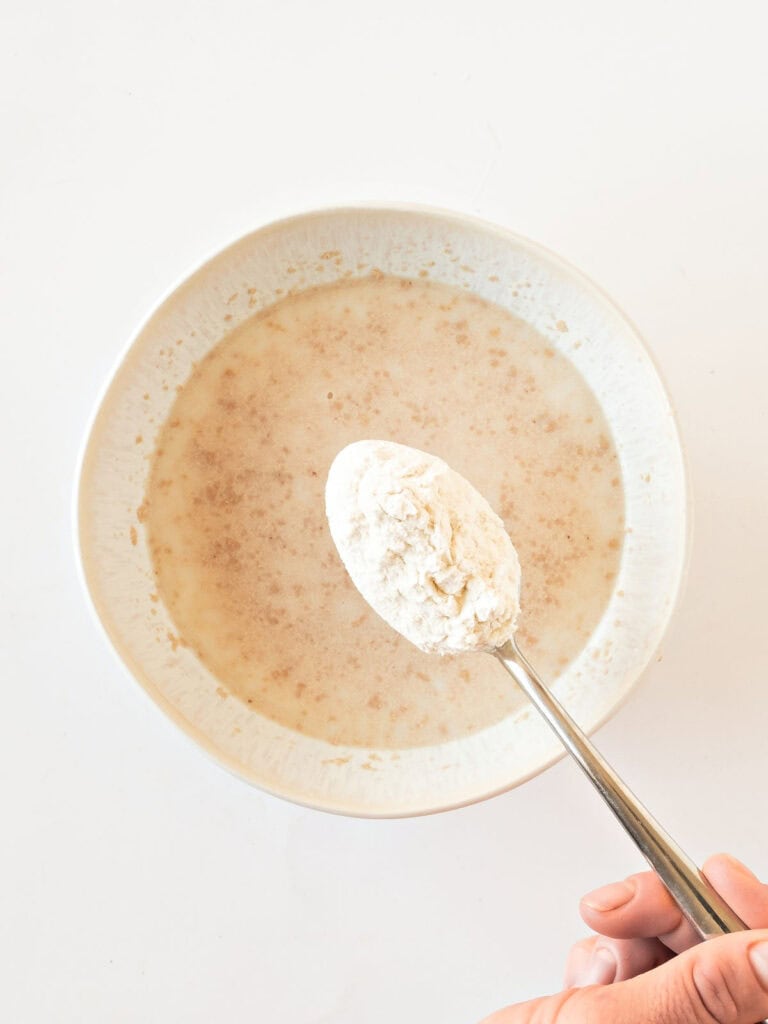
Activate the yeast
This step starts the yeast process and makes sure it's active and working well.
Lukewarm water, or tepid or barely warm water. If it's too hot, it will kill the yeast's power, so this is important. If the mixture doesn't foam, you must buy new yeast and start again.
The foamed yeast and the rest of the ingredients are stirred together in a large bowl.
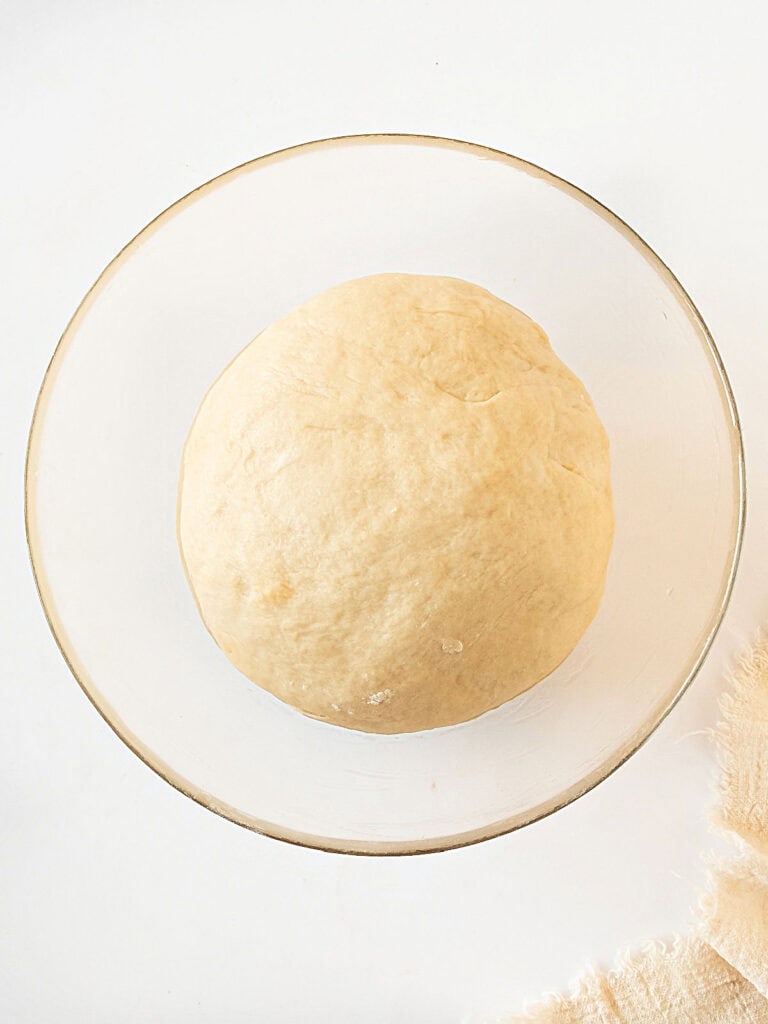
First rise
At first, it's a shaggy mass that feels like it will never turn into a smooth dough ball, but it will. Don't be tempted to add extra flour or liquid until you knead it. After kneading for a few minutes, the dough will be coarse. Knead it more until it's firm, quite smooth and forms a ball.
Transfer it to a clean large bowl where it can rise comfortably. If in doubt, err on the side of a larger container. You don't want it to overflow.
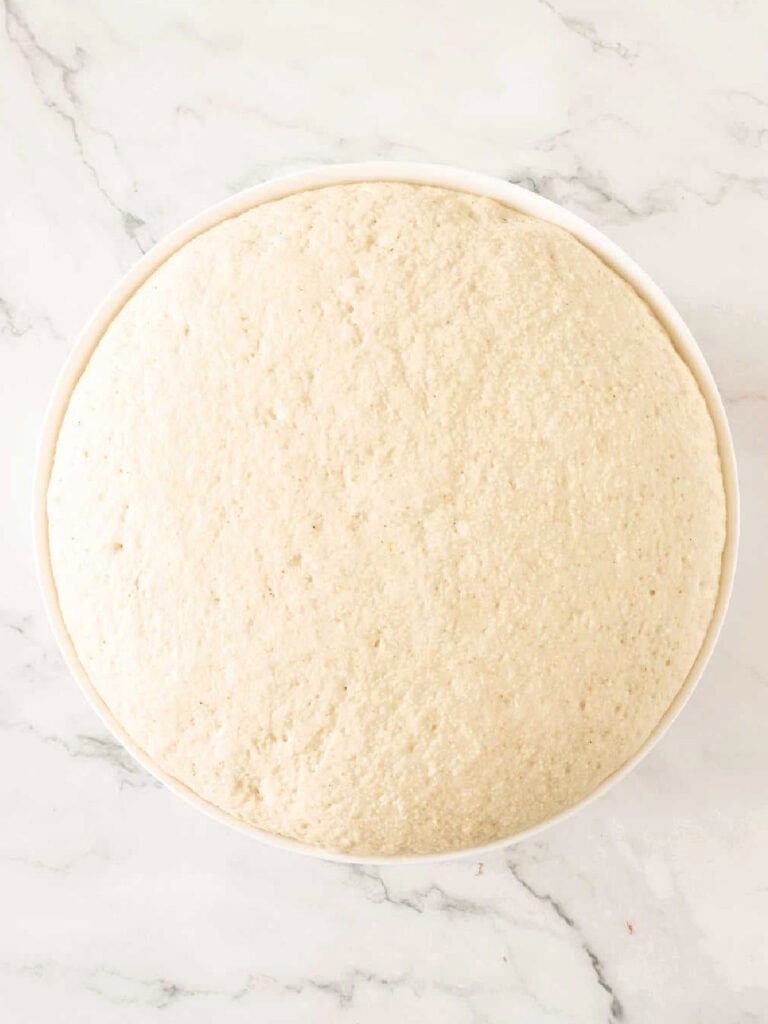
Step 3
Cover the bowl with a clean kitchen towel or loose plastic wrap and let the dough rise until doubled. This is called proofing the dough.
The dough will double, and it will be noticeable. Punch it down gently, to release the gas.
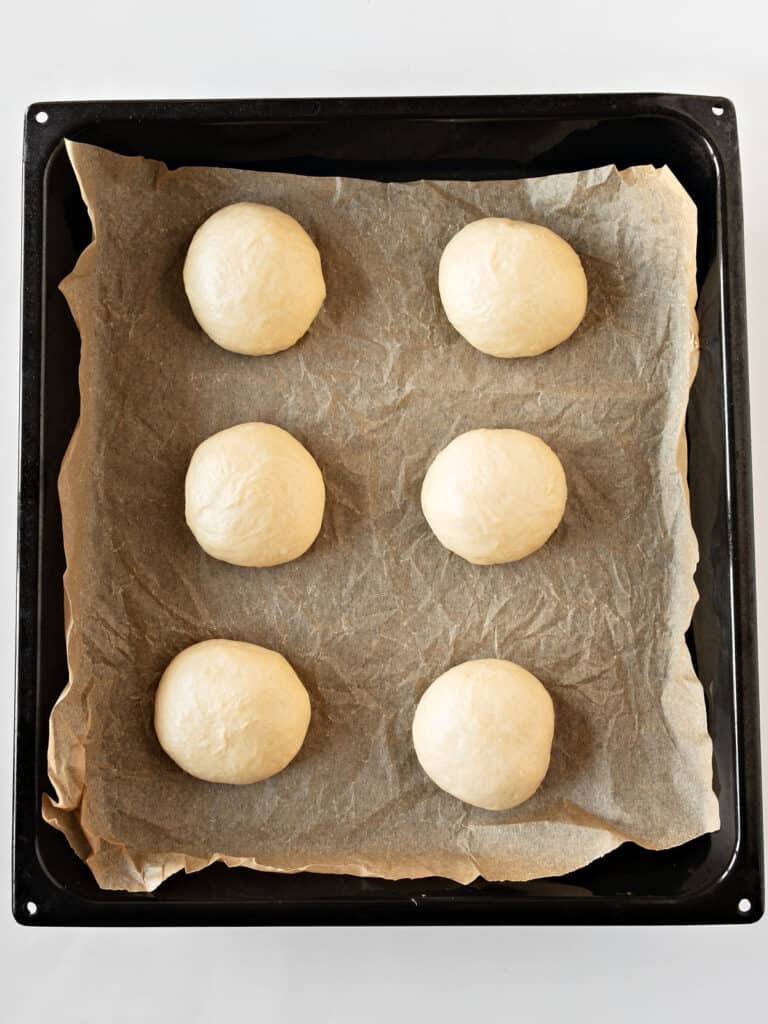
Step 4
The formed rolls are placed in the baking dish with parchment paper and need a second rise before baking.
Leave space between them, so they grow without touching.
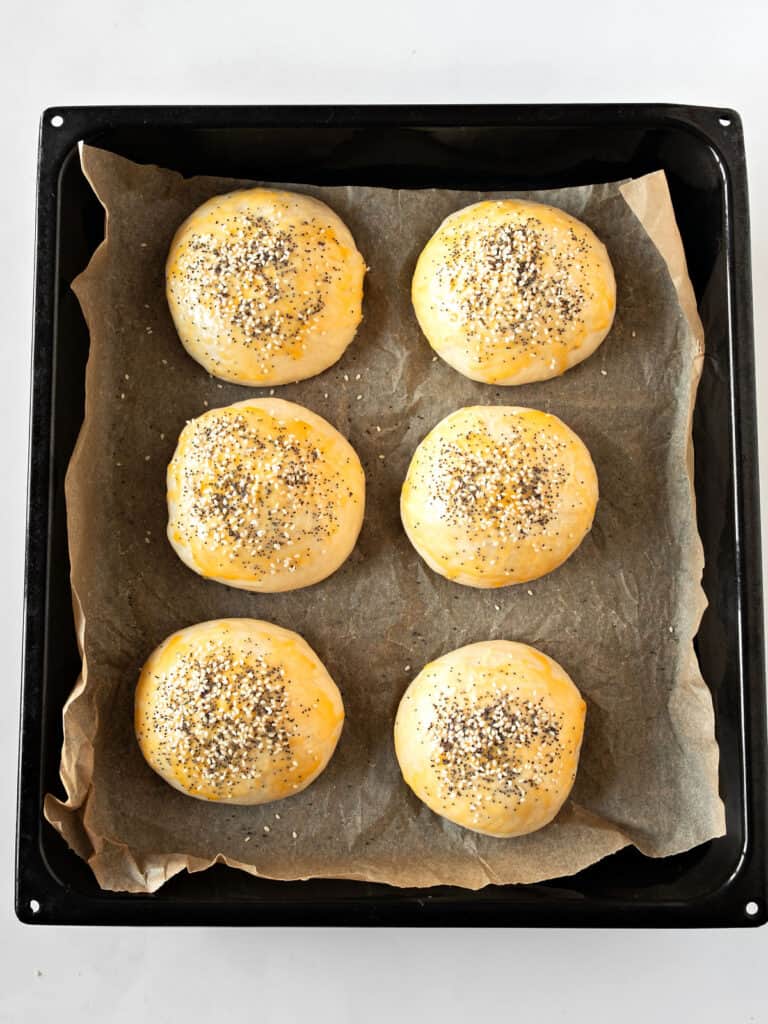
Step 4
They will puff, which is a signal that they are ready to be baked.
Before going into the oven, brush them with the egg wash and sprinkle with sesame and poppy seeds.
Baking
Preheated oven: This is important! If you forgot to turn it on, make the rolls wait until the oven has reached the correct temperature.
When are they done? They will rise and puff, and the top will be slightly golden brown and dry. If you lightly tap the bottom with your knuckles, it will sound hollow and not be too soft.
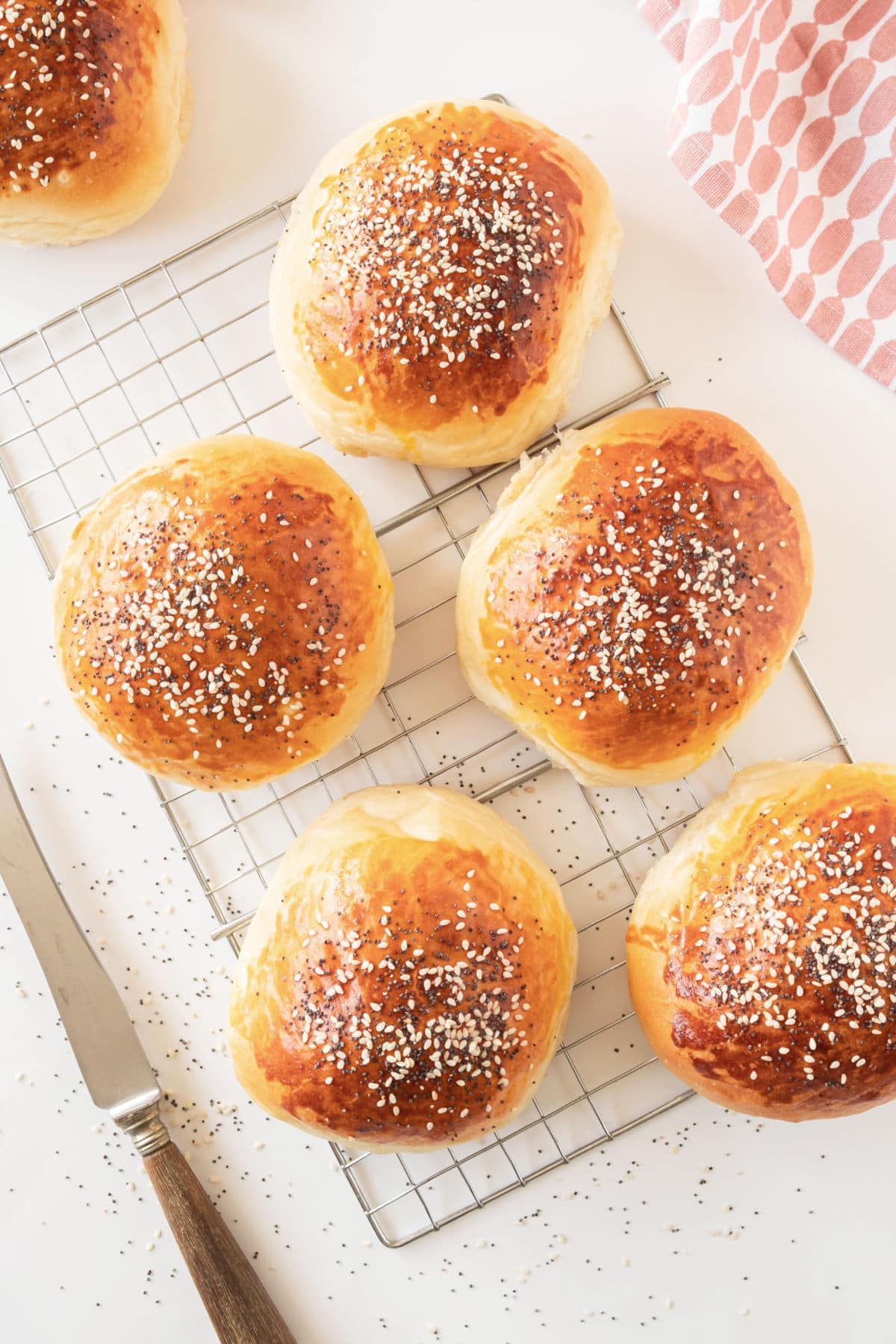
If you made this recipe and loved it, you can comment below and leave a 5-star ⭐️ review. Also, if you had issues, let me know so we can troubleshoot together.
You can also subscribe to our FREE email series 'Baking the Best' and our regular newsletter. Or follow and save my recipes on Pinterest.
As an Amazon Associate, I earn from qualifying purchases. Read my disclosure policy.
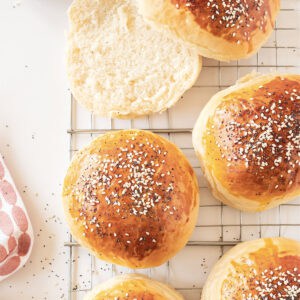
Old-Fashioned Soft Burger Buns
Ingredients
For the bread dough:
- 3 ½ cups bread or all-purpose flour
- 1 cups lukewarm milk, not hot
- 2 ¼ teaspoons active dry yeast, 1 packet
- 1 egg, at room temperature
- ¼ cup sunflower oil, or 3 tablespoons unsalted butter, melted
- 1 teaspoon salt
For the topping:
- 1 egg
- 2 tablespoons sesame seeds and poppy seeds
Instructions
Activate the yeast:
- In a small bowl, combine 1 cups lukewarm milk and 2 ¼ teaspoons active dry yeast. Add 1 tablespoon of flour from your measured amount and stir gently.
- Let stand for 5-10 minutes until the mixture becomes foamy and bubbly. If no foam appears, your yeast is inactive. Start over with fresh yeast.
Make the dough:
- In the bowl of the stand mixer (or a large mixing bowl if kneading by hand), whisk together the remaining flour and 1 teaspoon salt.
- Create a well in the center and add the foamy yeast mixture and 1 egg, at room temperature. Using the paddle attachment (or a wooden spoon or a spatula if by hand), mix until a shaggy dough begins to form.
- Add ¼ cup sunflower oil (or melted butter) and continue mixing until the oil is mostly incorporated. The dough will look messy at this stage; that's normal.
Knead the Dough
- By hand: Turn the dough onto a lightly floured surface and knead by hand for 8-10 minutes, or use a stand mixer with the dough hook for 5-7 minutes. The dough should become smooth, elastic, and slightly tacky (not sticky). If the dough feels too wet, add flour 1 tablespoon at a time until manageable.
- Stand mixer: Using the dough hook attachment, mix on low speed (speed 2) for 5-7 minutes. The dough should pull away from the sides of the bowl and form a ball around the hook. Stop the mixer occasionally to scrape down the hook and bowl. If the dough is too sticky and not forming a ball after 3 minutes, add flour 1 tablespoon at a time.
- The dough is smooth and elastic, and slightly tacky but not sticky. To test for proper kneading, stretch a small piece of dough: it should stretch thin enough to see light through without immediately tearing.
First Rise
- Place the dough in a greased bowl, turning once to coat all sides. Cover with a damp towel or plastic wrap. Let rise in a warm, draft-free place for 1 to 1½ hours, until doubled in size.
- Gently punch down the dough to release air bubbles. Turn onto a lightly floured surface and divide into 8 pieces (for standard buns).
- Shape each piece into a smooth ball by tucking the edges underneath and rolling between your palms. Place on a parchment-lined baking sheet, spacing them 3 inches apart to allow for expansion and flattening them slightly, so they expand as they bake more than rise.
Second Rise
- Cover the shaped buns with a clean kitchen towel and let rise for 30-40 minutes until noticeably puffy but not doubled.
- Preheat your oven to 375°F (190°C) during the last 15 minutes of the second rise.
- Beat 1 egg in a small bowl. Using a pastry brush, gently brush the tops of the buns with the beaten egg. Sprinkle with 2 tablespoons sesame seeds and poppy seeds, dividing evenly. You might not use them all.
- Bake for 15-18 minutes, until the buns are golden brown on top and sound hollow when gently tapped on the bottom. The internal temperature should reach 190°F (88°C).
- Transfer buns to a wire rack and let cool completely before slicing, about 1 hour. This prevents the interior from being gummy.


Gail says
Can't wait to try this but I wish you would give both measurements in the list. Weighing dry ingredients is so much more precise but I'm still using US measurements for liquid ingredients. Having both would make it easier. Please and thanks!
Paula Montenegro says
Hi Gail! You can toggle Metric measurements. The button is below the word Ingredients in the recipe card.